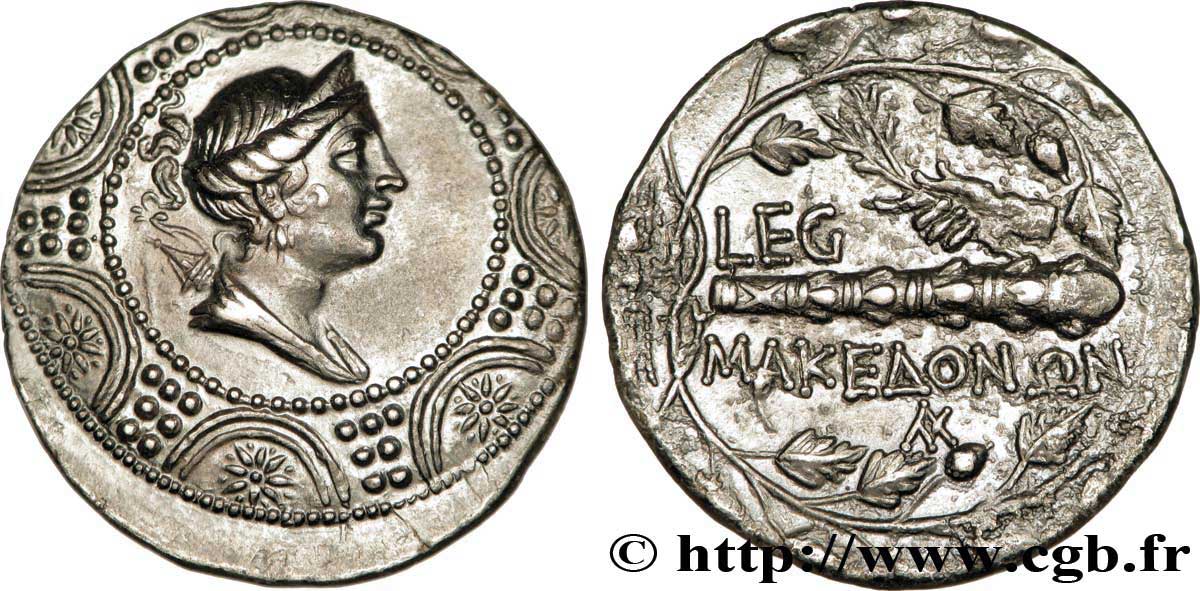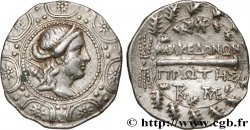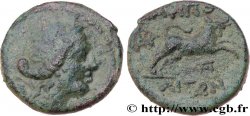v51_0112 - MACEDONIA - AMFIPOLIS Tétradrachme stéphanophore
MONNAIES 51 (2011)
Начальная цена : 1 800.00 €
Назначить цену : 3 200.00 €
Цена реализации : 2 200.00 €
Количество ставок : 2
Максимальная предлагаемая цена : 2 750.00 €
Начальная цена : 1 800.00 €
Назначить цену : 3 200.00 €
Цена реализации : 2 200.00 €
Количество ставок : 2
Максимальная предлагаемая цена : 2 750.00 €
Тип Tétradrachme stéphanophore
Дата: c. 148-147 AC.
Монетный двор / Город: Macédoine, Amphipolis
Металл: silver
Диаметр: 30 mm
Ориентация осей монеты: 3 h.
Вес: 16,76 g.
Редкость: R2
Emission: 2e
Комментарии о состоянии
Exemplaire de qualité exceptionnelle pour ce type de monnayage, légèrement décentré au droit sur le bouclier, parfaitement centré au revers. Magnifique portrait d’Artémis. Revers de style fin. Extraordinaire patine de médaillier à reflets gris bleutés, mordorés, légèrement granuleux au revers
Ссылки в каталоге: :
Происхождение:
Cet exemplaire provient de la vente Weil du 20 octobre 2004, n° 66
Лицевая сторона
Аверс: легенда: ANÉPIGRAPHE.
Аверс: описание: Buste diadémé et drapé d'Artémis Tauropolos à droite, l'arc et le carquois sur l'épaule, placé au centre d'un bouclier macédonien orné d'étoiles.
Обратная сторона
Реверс: легенда: LEG/.
Реверс: Описание: de chaque côté d'une massue ; au-dessus, main tenant un rameau d’olivier ; au-dessous, un monogramme ; le tout dans une couronne de chêne fermée par un foudre.
Реверс: легенда: MAKEDONWN/ (LU)
Комментарий
Mêmes coins que l’exemplaire de la vente Ars Classica XV, 1930, n° 541 (MN. 14, p. 20, n° 11a,pl. VI). Petite cassure de coin sous le A de MAKEDONWN. L’axe des coins pourrait être à 6 heures, la massue étant alors placée verticalement. L’exemplaire de MONNAIES XVIII, n° 60 s’est vendu dans un état similaire 2.460€ sur un maximum à 2.915€ avec neuf offres.








 Cообщить об ошибке
Cообщить об ошибке Распечатать страницу
Распечатать страницу Отправить мой выбор
Отправить мой выбор Задать вопрос
Задать вопрос Consign / sell
Consign / sell
 Информация
Информация









